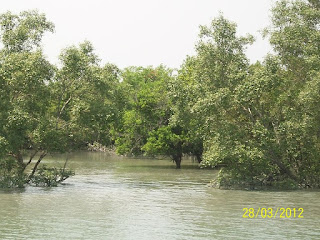This has been reported in telegraphindia.com dated 4 March 2017.
The researchers are from the Indian Institute of Remote Sensing in Dehradun, Jagannath University in Dhaka and Vrije University in Brussels and they have based their conclusions on a study of satellite imagery study. It has detected significant loss in mangrove forest density but very loss of land.
The Sunderbans are rich in biodiversity and, as per the Zoological Society of London (ZSL), it is home to over 35 reptile species, 120 commercial fish species, 300 bird species and 32 mammal species, including the tiger. The reasons for reduction in the dense mangrove forest cover is more on the Indian side attributed to expansion of human settlements and agriculture on the Indian side. Simultaneously, on the Bangladesh side, it is due to shrimp farming.
Image courtesy wikimediacommons.org
Barack Obama enters the league of top US Presidents with ranking of 12
Public tours of the White House will begin again from March 7
Explosion in French nuclear power plant in a non-nuclear zone
Didi caught in the whirlpool of industries (satire)
Moody’s love hate relationship with the raincoat (satire)
The curse of social media – cold blooded murders committed
Mumbai will get to see Justin Bieber in action on May 10
Kangana Ranaut is 'fearless Julia' in Rangoon
Shakti Kapoor holds his audience spellbound in the Khandagiri Yatra
ISIS carries out car bombing in Baghdad - kills at least 55
Suicide bomb attack kills at least 72 in a Sufi shrine in Pakistan
Mayor of London worried about ISIS attacks on the city

No comments:
Post a Comment